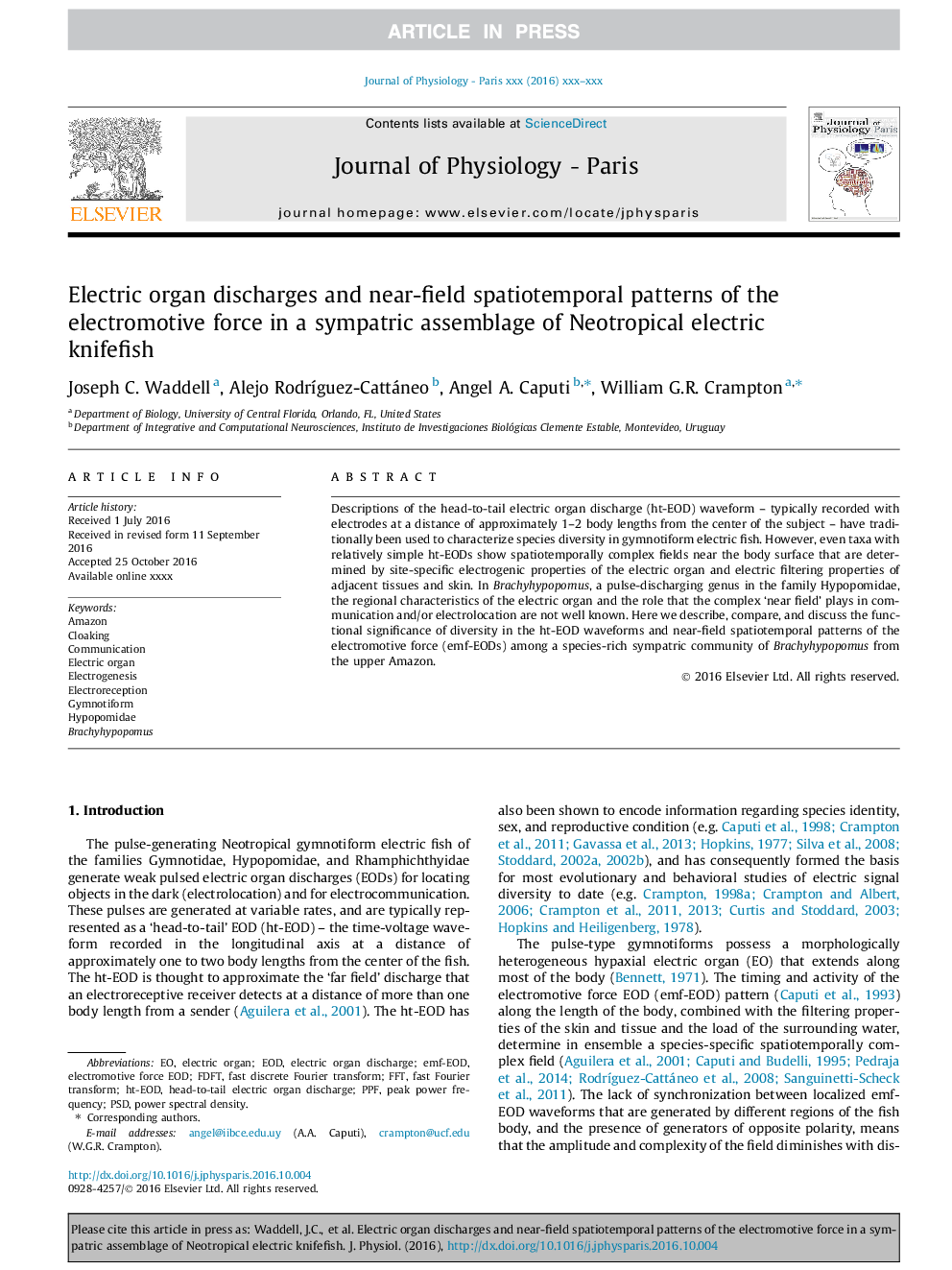| Article ID | Journal | Published Year | Pages | File Type |
|---|---|---|---|---|
| 5593263 | Journal of Physiology-Paris | 2016 | 18 Pages |
Abstract
Descriptions of the head-to-tail electric organ discharge (ht-EOD) waveform - typically recorded with electrodes at a distance of approximately 1-2 body lengths from the center of the subject - have traditionally been used to characterize species diversity in gymnotiform electric fish. However, even taxa with relatively simple ht-EODs show spatiotemporally complex fields near the body surface that are determined by site-specific electrogenic properties of the electric organ and electric filtering properties of adjacent tissues and skin. In Brachyhypopomus, a pulse-discharging genus in the family Hypopomidae, the regional characteristics of the electric organ and the role that the complex 'near field' plays in communication and/or electrolocation are not well known. Here we describe, compare, and discuss the functional significance of diversity in the ht-EOD waveforms and near-field spatiotemporal patterns of the electromotive force (emf-EODs) among a species-rich sympatric community of Brachyhypopomus from the upper Amazon.
Keywords
Related Topics
Life Sciences
Biochemistry, Genetics and Molecular Biology
Physiology
Authors
Joseph C. Waddell, Alejo RodrÃguez-Cattáneo, Angel A. Caputi, William G.R. Crampton,
